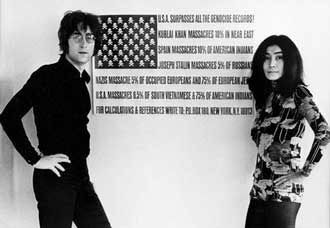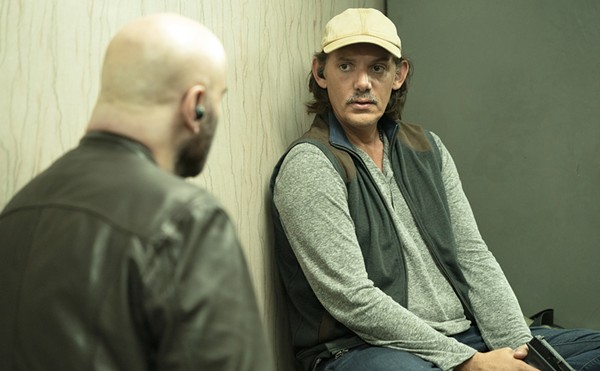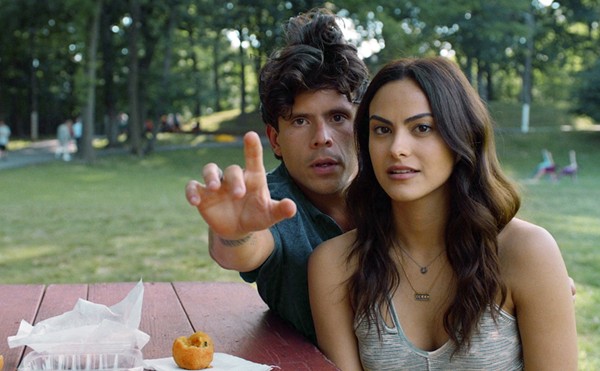| John Lennon and Yoko Ono, winning enemies and influencing artists at the height of their notoriety. |
| The U.S. vs. John Lennon Writ. and dir. David Leaf, John Scheinfeld (PG-13 |
That blasphemy earned the enmity of certain Christians, but what irked Richard Nixon was Lennon’s embrace of radical politics. David Leaf and John Scheinfeld begin their film with a 1971 benefit concert for John Sinclair, an advocate of decriminalizing marijuana. Lennon participated, and the immediate consequence was nullification of Sinclair’s 10-year prison sentence as well as surveillance and intimidation against the long-haired English agitator. As Lennon became committed to ending the Vietnam War, the administration intensified efforts to silence him. Strom Thurmond recommended deportation, but after a five-year legal battle and Nixon’s own resignation, Lennon was vindicated with permanent-resident status. He was killed in 1980, though the film does not insinuate government complicity in the murder.
Ron Kovic, the author of Born on the Fourth of July and one of many talking heads (Geraldo Rivera is an inapt other), was in a paraplegic ward in the Bronx in 1968. He recalls watching TV while police beat demonstrators outside the Democratic National Convention in Chicago. “Perhaps John Lennon had tears streaming down his face that night as I did,” says Kovic. It is a tenuous link, but much of the film uses Lennon as a mere pretext for a primer on “the ’60s” — 1967-73, turbulent years of youthful counterculture; bliss was it in that dawn to be alive, but to be young was very heaven, and hell. Lennon’s legal troubles are a sideshow, and, aside from assertions by G. Gordon Liddy and John Dean that the administration was plotting against him, the case of The U.S. vs. John Lennon proceeds largely off-camera. What we do see is combat in Vietnam and on the streets and campuses of the United States. John and consort Yoko Ono spend a week on a hotel mattress during their baffling “bed-in” and buy billboards in 11 cities to proclaim: “War Is Over ... if you want it.” Cultivating friendships with Jerry Rubin, Abbie Hoffman, and Bobby Seale, they stage pacifistic provocations. “All You Need Is Love,” “Revolution,” “Give Peace a Chance,” and “Imagine” become anthems of the peace movement.
“Blowin’ in the Wind” and “Where Have All the Flowers Gone?” also inspired widespread revulsion over the war, and, though absent from the film, other cultural celebrities, including Joan Baez, Robert Bly, Jane Fonda, Allen Ginsberg, and Pete Seeger were as active as Lennon in opposing the Vietnam debacle. His need to placate the Immigration and Naturalization Service caused Lennon to temper his dissent. Yet, insists Ono, “His message is still alive.” Though the Age of Lennon now seems distant to those who have never bought a 78 rpm record, it is hard not to hear contemporary echoes when Nixon, refusing to set a deadline for withdrawal, promises that the Vietnamese will assume responsibility for their own security. The complex relationship between art and politics was hardly settled by either Lennon or Lenin. About the murdered former Beatle, Gore Vidal expresses no ambivalence: “He represented life, and that is admirable. And Mr. Nixon and Mr. Bush represent death, and that is a bad thing.”
















